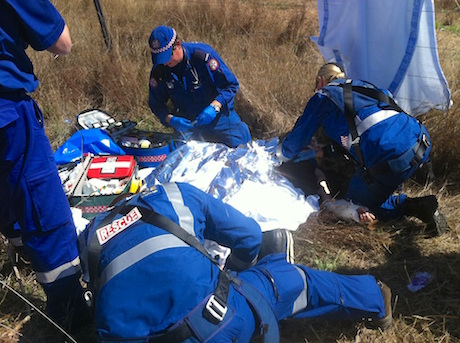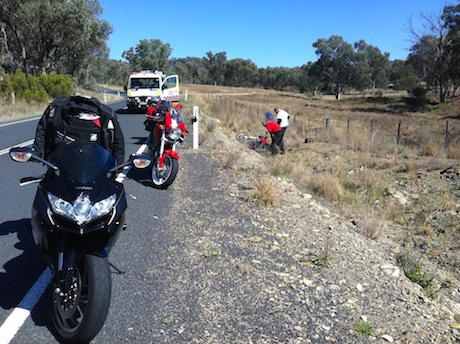Some riders worry about stopping to help at a crash scene because they are concerned about not having enough skills or being sued if something goes wrong.
However, former First Aid for Motorcyclists owner Roger Fance says riders – or first responders – should not be concerned.
“Most state Civil Liability laws have Good Samaritan clauses that protect people who act in good faith, with due care and not recklessly,” he says.
Importantly, there has never been a successful case of suing a first responder in Australia.
Michael Eburn of Australian Emergency Law confirms that “no-one’s been sued for rendering assistance at an accident; and they’re not going to be”.
Legal opinion
While it should not prevent people from providing emergency first-aid care, accredited specialist lawyer, Sean Delpopolo, from East Coast Lawyers on the Gold Coast highlights an important distinction of Good Samaritan laws in Queensland compared with other states.
He says the Queensland Civil Liability Act 2003 (‘CLA’) excludes liability for the negligence of someone rendering assistance in Queensland but only if they are acting for or on behalf of a prescribed entity, such as the ambulance, fire brigade, rescue helicopters etc.
“It does not protect someone from the general public from a claim in negligence,” he says. However, no one has yet been successfully sued.
“Members of the general public would, however, in my view, be protected in circumstances where they act reasonably, such that it doesn’t amount to negligence, as the victim will not be able to argue that the first responder breached any duty of care.
“If they arrive at an accident scene, the first thing they should do is contact emergency services on 000 and follow their instructions. This will hopefully afford them the protection of the Act.
“If they can’t contact emergency services for whatever reason, however, then they should still help where they can. They would need to carefully assess the situation to ensure that they are not going to take any action which might be deemed reckless or careless and then take whatever measures they consider reasonable, acting within their own specific skill set, knowledge and experience.
“If a good samaritan / first responder acts in good faith and reasonably, then a court would be hard pressed to make a finding that they were negligent and that their negligence caused or contributed to any further harm suffered by the victim.”
Roger says that if the first responder is directly involved in the accident, then they have a duty of care to provide first aid.
A first aider should seek consent from the casualty, if conscious, before performing first aid.
However, if the casualty is delirious or unconscious, then consent is implied because the casualty can’t make an informed decision, he says.
If the casualty is a child, then the first responder should seek permission from a guardian, if present.
“Once you have started providing first aid you must continue until the ambulance arrives,” Roger says.
First responders should also record what they do.
“It’s important to write down as much as you can remember after the accident as the police are likely to ask for a statement,” Roger says.
First responders should also take photos and get the names and contact details of witnesses. Make and keep copies of the information collected and hand it over to authorities.
We strongly urge all riders to undertake a first-aid course, in particular First Aid for Motorcyclists which is touring the country. CLICK HERE TO BOOK THE FIRST-AID COURSE




